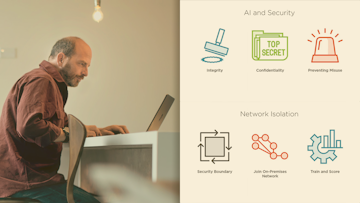

Using Microsoft Azure Security Tools to Protect AI Solutions

Securing AI solutions is of paramount importance; not only can AI solutions be hacked, they can be used to hack other systems. In this course, Using Microsoft Azure Security Tools to Protect AI Solutions, you'll explore how AI and security introduce new...
Read more
Good to know
Save this course
Career center
Security Analyst
Information Security Analyst
Chief Information Security Officer (CISO)
Security Manager
Security Consultant
Cybersecurity Engineer
Security Architect
Compliance Analyst
Software Engineer
Privacy Analyst
Machine Learning Engineer
Cloud Engineer
Data Scientist
Security Researcher
Penetration Tester
Reading list
Share
Similar courses
OpenCourser helps millions of learners each year. People visit us to learn workspace skills, ace their exams, and nurture their curiosity.
Our extensive catalog contains over 50,000 courses and twice as many books. Browse by search, by topic, or even by career interests. We'll match you to the right resources quickly.
Find this site helpful? Tell a friend about us.
We're supported by our community of learners. When you purchase or subscribe to courses and programs or purchase books, we may earn a commission from our partners.
Your purchases help us maintain our catalog and keep our servers humming without ads.
Thank you for supporting OpenCourser.

